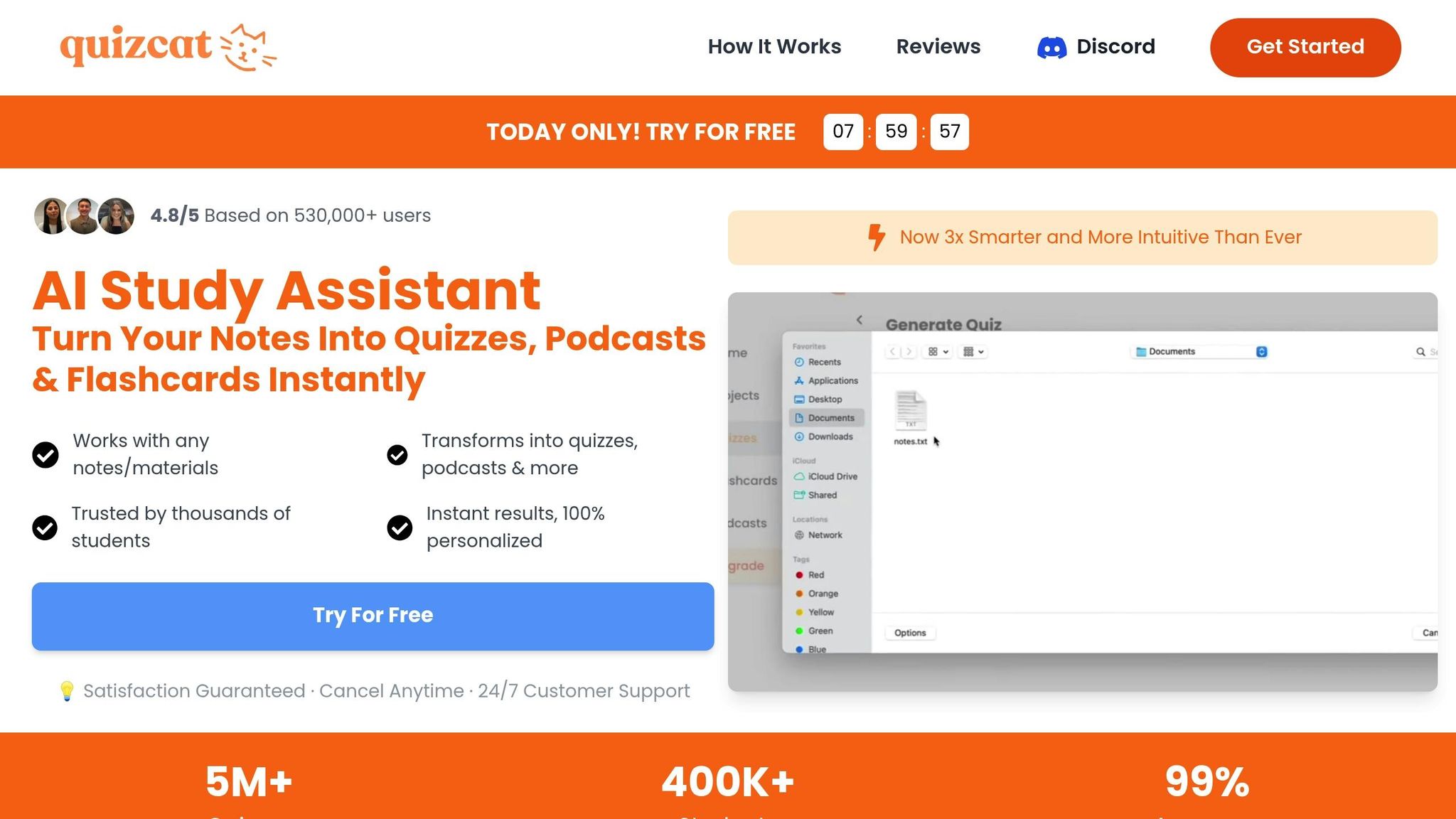
Multimodal Behavior and Cognitive Overload Detection
Cognitive overload makes learning harder by overwhelming your brain with too much information. This article explains how multimodal behavior analysis - a method using speech, body language, and physical responses - can detect overload early and improve learning experiences.
Key Takeaways:
- What is Cognitive Overload? When your brain struggles to process too much information, affecting focus, memory, and motivation.
- Signs to Watch For: Frequent posture changes, fidgeting, or reduced comprehension during study sessions.
- How It's Detected: Tools track physical and behavioral cues to adjust learning environments in real-time.
- Solutions: Systems like Quizcat AI create custom learning paths, recommend breaks, and convert notes into quizzes, flashcards, or podcasts to ease the strain.
By identifying overload early, these tools help students learn better and stay motivated.
Signs of Cognitive Overload
Physical Response Signals
Frequent posture changes, like slumping or constant shifting, along with increased fidgeting, can indicate cognitive overload during learning.
| Physical Behavior | Description | How to Detect |
|---|---|---|
| Posture Changes | Repeated adjustments or slumping in posture | Observe directly or use motion tracking |
| Fidgeting | Small, repetitive hand or body movements | Visual observation or gesture analysis |
Todd Finley: 5 Ways to Overcome Cognitive Overload (e325)
sbb-itb-1e479da
Using Detection Methods in Education
Spotting early signs of overload not only helps educators but also powers smarter educational tools. By identifying cognitive overload early, education systems can now adjust to create more effective learning experiences.
Custom Learning Paths
Detection systems can tweak content difficulty, pace, and format automatically when signs of overload are detected. This ensures learning stays on track without overwhelming students. For instance, Quizcat AI has facilitated the creation of over 5 million quizzes, benefiting more than 400,000 students. Impressively, it boasts a 4.8/5 rating from over 530,000 users [2].
Smart Break Scheduling
Cognitive load detection also enables smarter break scheduling. By analyzing behavioral cues - like changes in focus or performance - these systems recommend breaks tailored to individual needs. This helps students recharge and stay productive over longer study periods.
Study Tools Enhancement
Quizcat AI takes things further by transforming notes into quizzes, flashcards, and even podcasts. Offering multiple formats allows students to switch learning modes, making studying less overwhelming.
"The quizzes are great, but the real MVP is the podcast feature. It's perfect for cramming while I'm doing other stuff. 10/10 would recommend." – Noah Perez [2]
The platform also supports various file formats, including PDFs, DOCX, and TXT, to create instant study materials. Users have reported better test results and more efficient study sessions thanks to these features [2].
Current Limits and Next Steps
Current Obstacles
Multimodal behavioral analysis still has hurdles to overcome. For one, it often requires advanced hardware like high-quality sensors and cameras, which makes it less accessible. Factors like background noise or poor lighting can also reduce data accuracy. On top of that, individual differences in learning and behavior make it harder to achieve consistent detection. Privacy concerns add another layer of complexity, as institutions must find a balance between monitoring benefits and protecting students' personal information. These challenges highlight the need for more refined solutions.
Upcoming Improvements
New technologies are starting to tackle these issues. Researchers are improving machine learning models to identify a wide range of learning patterns using basic tools like standard webcams and microphones. For example, Quizcat AI now includes cognitive load detection to tailor study experiences to individual needs. Future efforts will focus on local data processing to enhance privacy, better pattern recognition for diverse learning styles, and affordable options for educational use.
These advancements aim to work seamlessly with existing study tools, giving students more personalized support in managing their cognitive load.
Conclusion
Key Takeaways
Multimodal behavior analysis helps identify cognitive overload in educational environments. By tracking various behavioral cues - like voice changes, physical reactions, and body signals - educators and learning platforms can determine when students are reaching their mental limits. This approach supports more effective learning by tailoring pacing and providing timely support. Detecting overload early reduces fatigue and enhances information retention. As technology evolves, these methods are becoming more accurate and accessible, shaping the future of personalized learning platforms.
QuizCat AI in Action

QuizCat AI applies these principles directly within its adaptive learning system. With over 400,000 students served, a 99% accuracy rate, and a stellar 4.8/5 rating from more than 530,000 users, the platform automatically adjusts the complexity and pace of study materials when it detects cognitive strain.
"Literally a lifesaver during finals. Uploaded my notes, hit 'create,' and BOOM - quizzes and flashcards ready to go. It's like having a personal tutor 24/7", says Jake Harrison.
